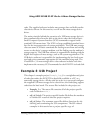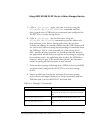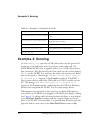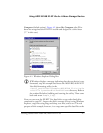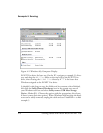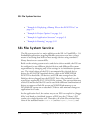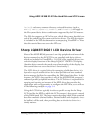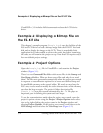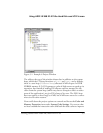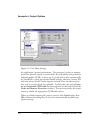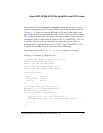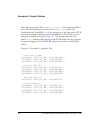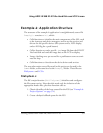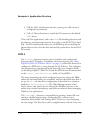
Getting Started with ADSP-BF548 EZ-KIT Lite 5-3
Using ADSP-BF548 EZ-KIT Lite Hard Disk and LCD Screen
fwrite()) and many common directory-oriented functions (such as
mkdir(), rmdir(), opendir(), readdir(), and closedir()) will apply to
the file system/device driver combination supported by the FSS instance.
The FSS also supports an API of its own, which allows more detailed con-
trol of the underlying file system and device drivers. The API description
is included in the FSS documentation accompanying VisualDSP++. Note
that this tutorial does not cover the API’s use.
Sharp LQ043T1DG01 LCD Device Driver
Most of the ADSP-BF548 processor’s on-chip peripherals and most of the
devices mounted on the EZ-KIT Lite are supplied with device drivers,
which are included in VisualDSP++ 5.0. One of the supplied drivers con-
trols the display functions of the Sharp LQ0431T1DG01 LCD display.
(Another driver controls the touch-screen functionality of the display, but
this tutorial does not cover that driver’s functionality.)
The LCD driver is a typical driver for managing a bulk-data device: it is
layered on top of another driver for its data provider and uses standard
device manager facilities for controlling the DMA-based data flow. In this
instance, the LCD’s data provider is one of the ADSP-BF548 processor’s
enhanced parallel peripheral interfaces. The LCD driver is responsible for
opening and running an instance of the EPPI driver but provides the
application with an opportunity to configure the EPPI first, as we will see
in the following example on page 5-4.
Using the LCD driver typically involves a specific set-up for the Sharp
LCD (and for the EPPI to which the LCD connects), then generic control
of the DMA-based I/O. The latter requires deciding which of the standard
data flow methods (chained buffers, chained buffers with loopback, circu-
lar buffers) will be used, then providing data to the device driver in a
timely manner.



